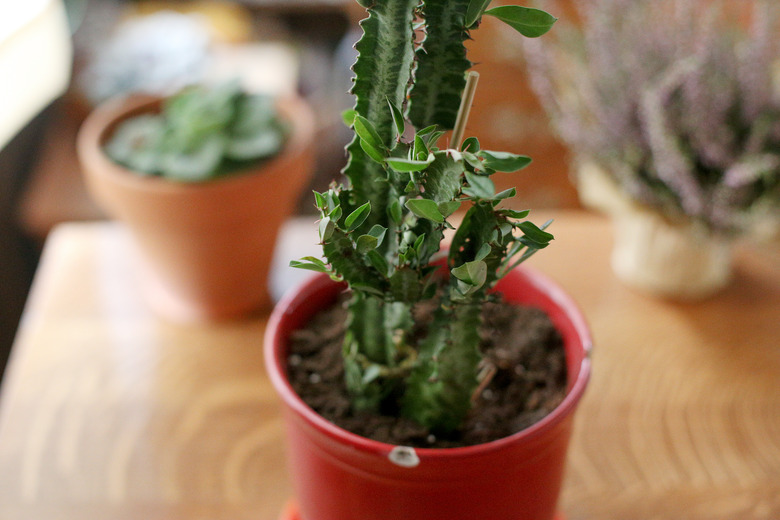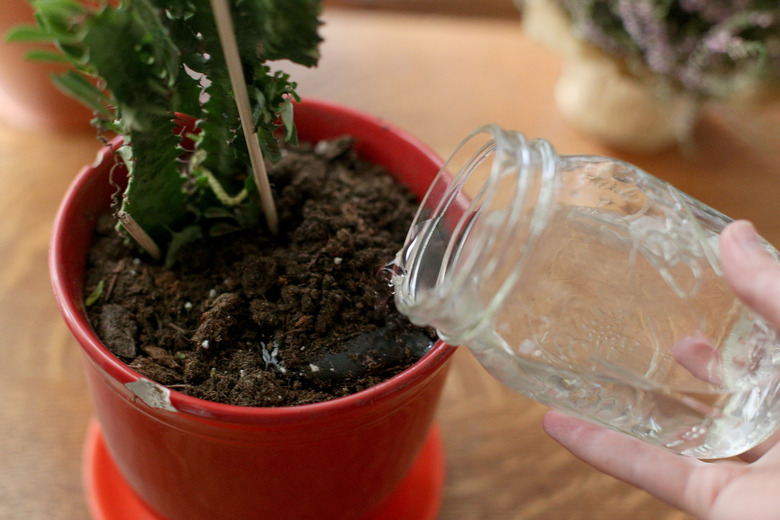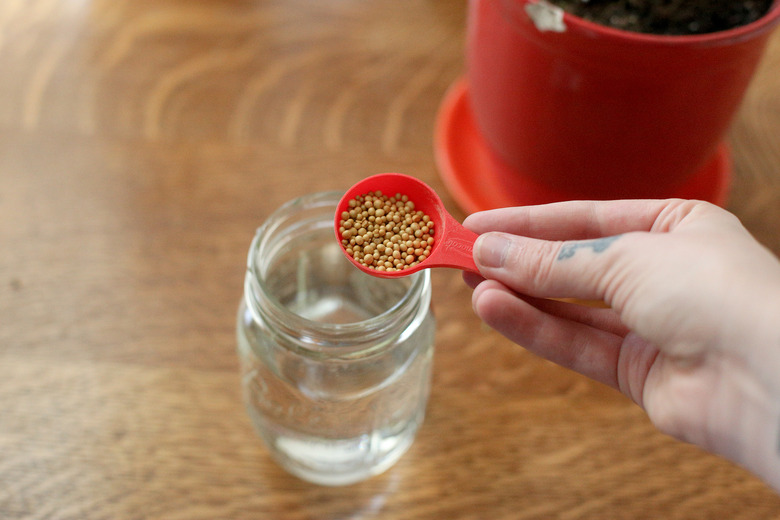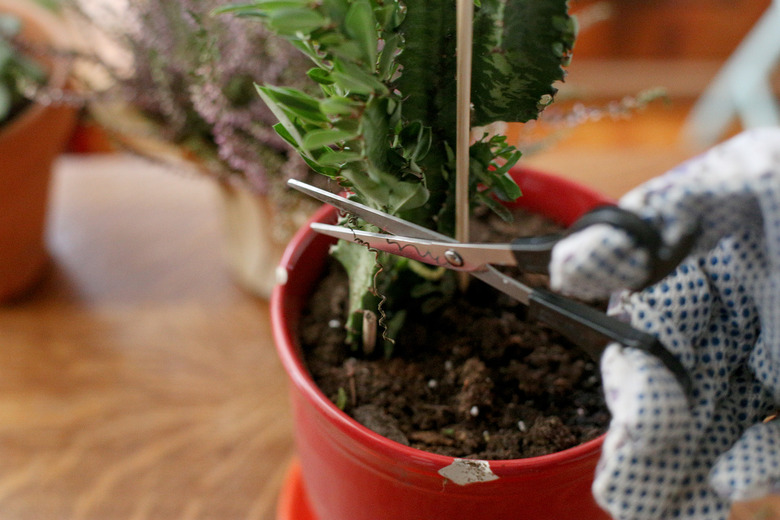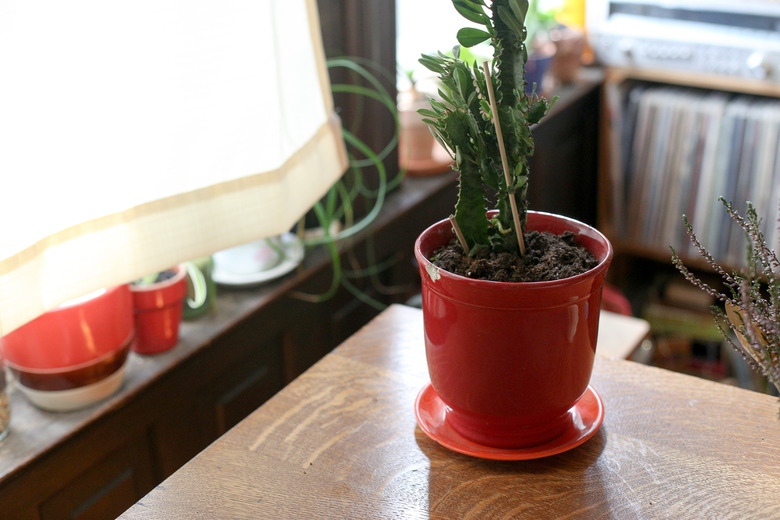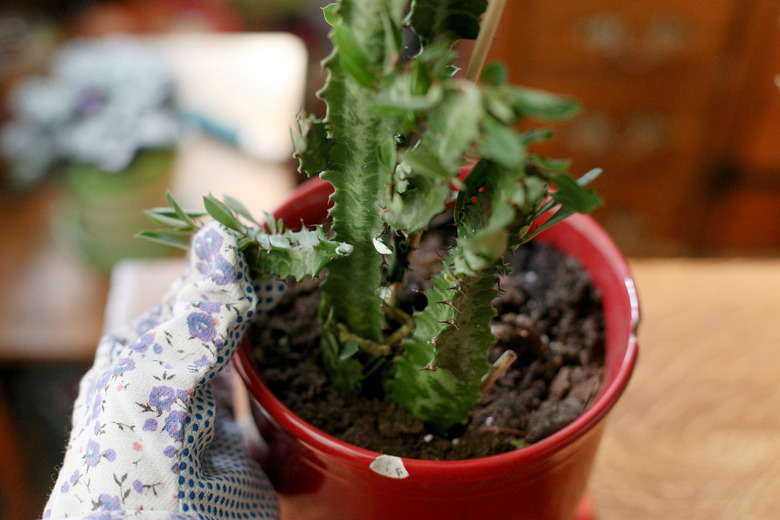How To Care For A Euphorbia Trigona
Commonly called African milk tree, Euphorbia trigona is a hardy, low-maintenance succulent noted for its erect, columnar branches and slender leaves. It grows outdoors in U.S. Department of Agriculture plant hardiness zones 9 through 11, where it will grow 3 to 6 feet tall if planted in a warm, bright part of the garden. An established African milk tree can thrive despite neglect, but will look tidier and live longer if you give it some attention.
Watering Tips
African milk tree's homeland of Namibia is a desert nation in southern Africa, which makes the plant thrifty with water. It can live for years on only rainwater. Occasional watering during the summer can help improve its appearance. Provide no more than 1 inch of water every seven to 10 days during the summer and let the soil dry out completely in the top 1 to 2 inches before watering again. Water in the evening when moisture uptake is at its highest. The plant may wilt if the soil is too dry or too wet. If you notice the African milk tree is wilting, probe the soil to check its moisture level. If it feels bone dry, water the plant well and if it feels soggy, stop watering until the soil dries out completely. If you're growing it in a pot, use a pot that has drainage holes.
Fertilizer Needs
The gritty, sand-based soil that African milk tree needs to thrive may provide the right moisture balance, but it can also lack vital nutrients. Supplemental fertilizer will help keep the plant growing, although the fertilizer must be applied with a light hand. Dissolve 1/2 teaspoon of general-purpose, 15-15-15 fertilizer in 1 gallon of water and apply it after watering every two weeks during the spring and summer. The growth rate of an African milk tree slows significantly in fall and winter, so stop fertilizing when the weather cools.
Pruning and Grooming
The spare and upright habit of African milk tree means it does not require pruning to look tidy and attractive. Pruning is not strictly required and is largely a matter of personal preference, but it may become necessary if the plant has damaged branches. Snip off the damaged branches 1 to 2 inches below the affected area using a sharp, clean utility knife. Wear protective gloves when pruning because African milk tree exudes sap that may cause an allergic skin reaction in some people. The severed branch will heal over within a few days and may send up new, branching growth. Before and after use, wipe the blade with a cloth soaked in rubbing alcohol.
Potential Problems
African milk tree suffers few problems with pests or diseases when grown under the right conditions. It may experience stress if exposed to extremes in temperature or intense sun. Sun scorch can affect an African milk tree grown with unfiltered southern exposure. This is even more likely if reflective surfaces, such as stones or concrete, are to the plant's south. Cover reflective surfaces with mulch, or move a pot-grown African milk tree to an area with less intense sun. An African milk tree may drop its leaves. It most often occurs in winter and is a natural part of the plant's cycle. Summer leaf loss may indicate drought stress, so water the plant well and watch for new leaves in a few weeks.
A Word of Warning
African milk tree earned its common name from the white, milky sap it exudes. It works to repel sap-sucking insects and animal pests, but it can also cause injury or an allergic reaction in people. The plant's spines can cause painful cuts and scrapes. Install a barrier around its bed to keep pets and children away, and move pot-grown specimens to an out-of-the-way area. Don't plant it next to paths, patios, play areas or driveways.
References
- The Complete Encyclopedia of Trees and Shrubs; Eric Wasson
- Logee's Plants for Home and Garden: Cultural Information — Euphorbia
- University of Washington Botanic Garden: Gardening Answers Knowledgebase
- Toronto Master Gardeners: Cactus-Like Plant
- International Euphorbia Society: Cultivation
